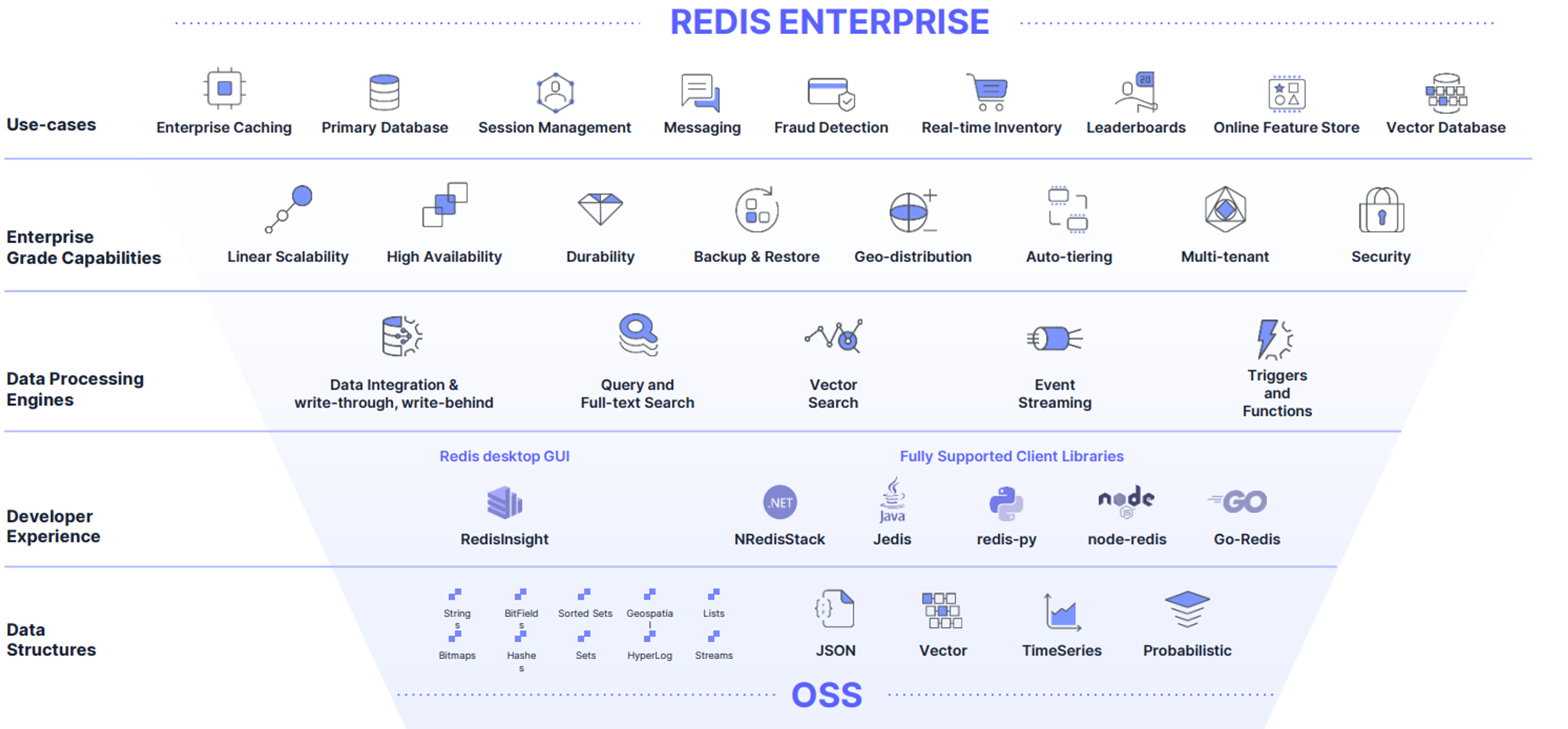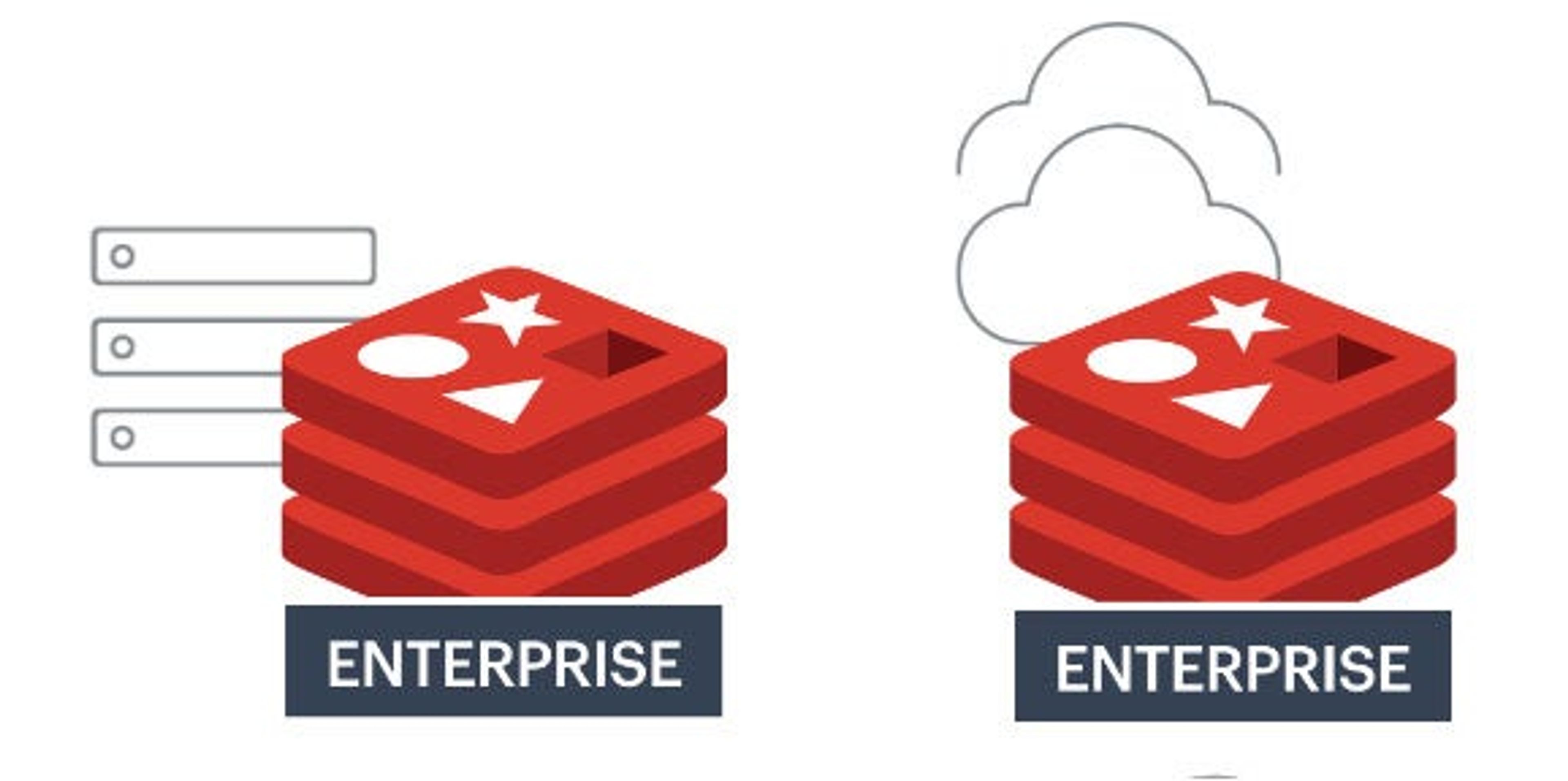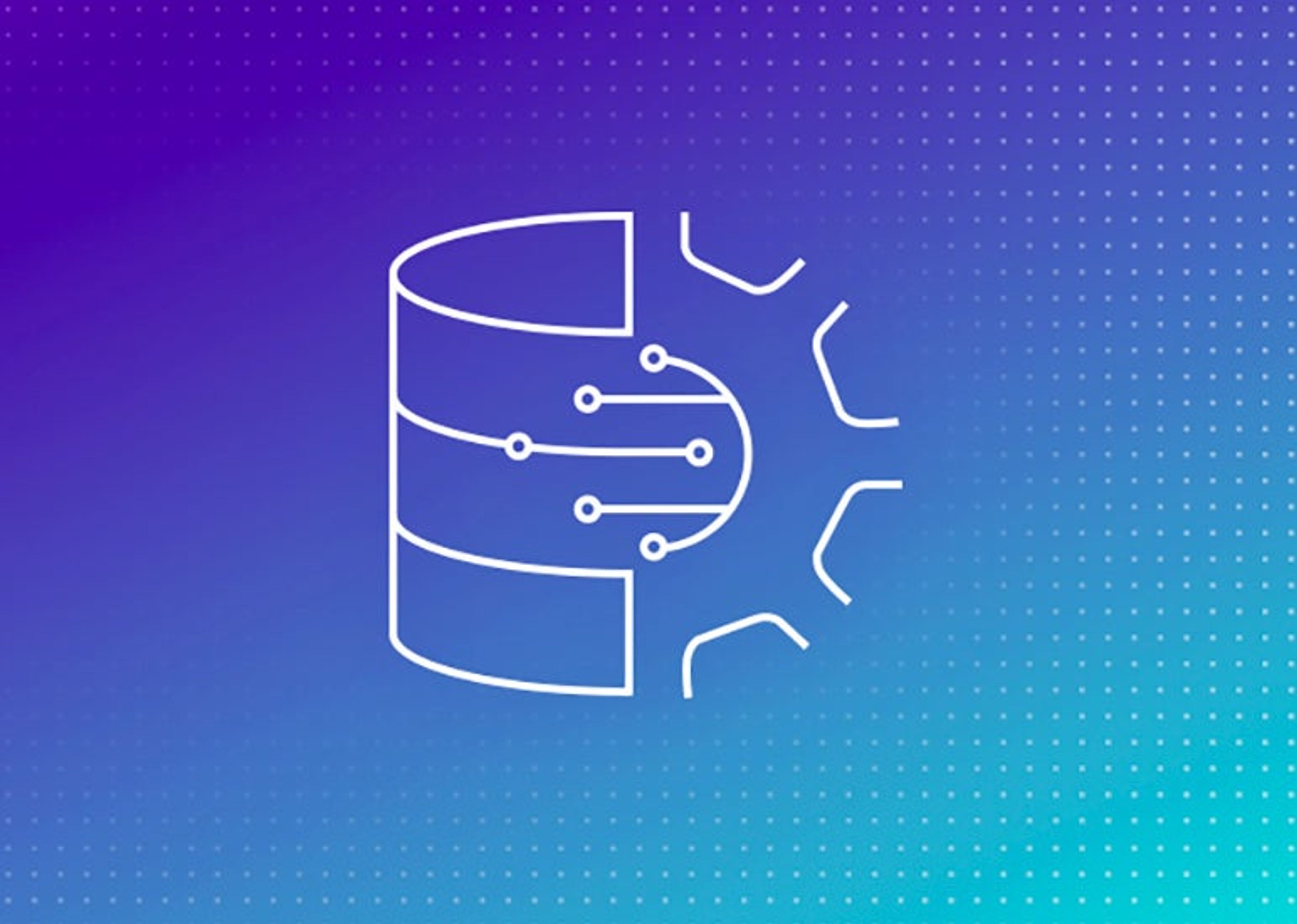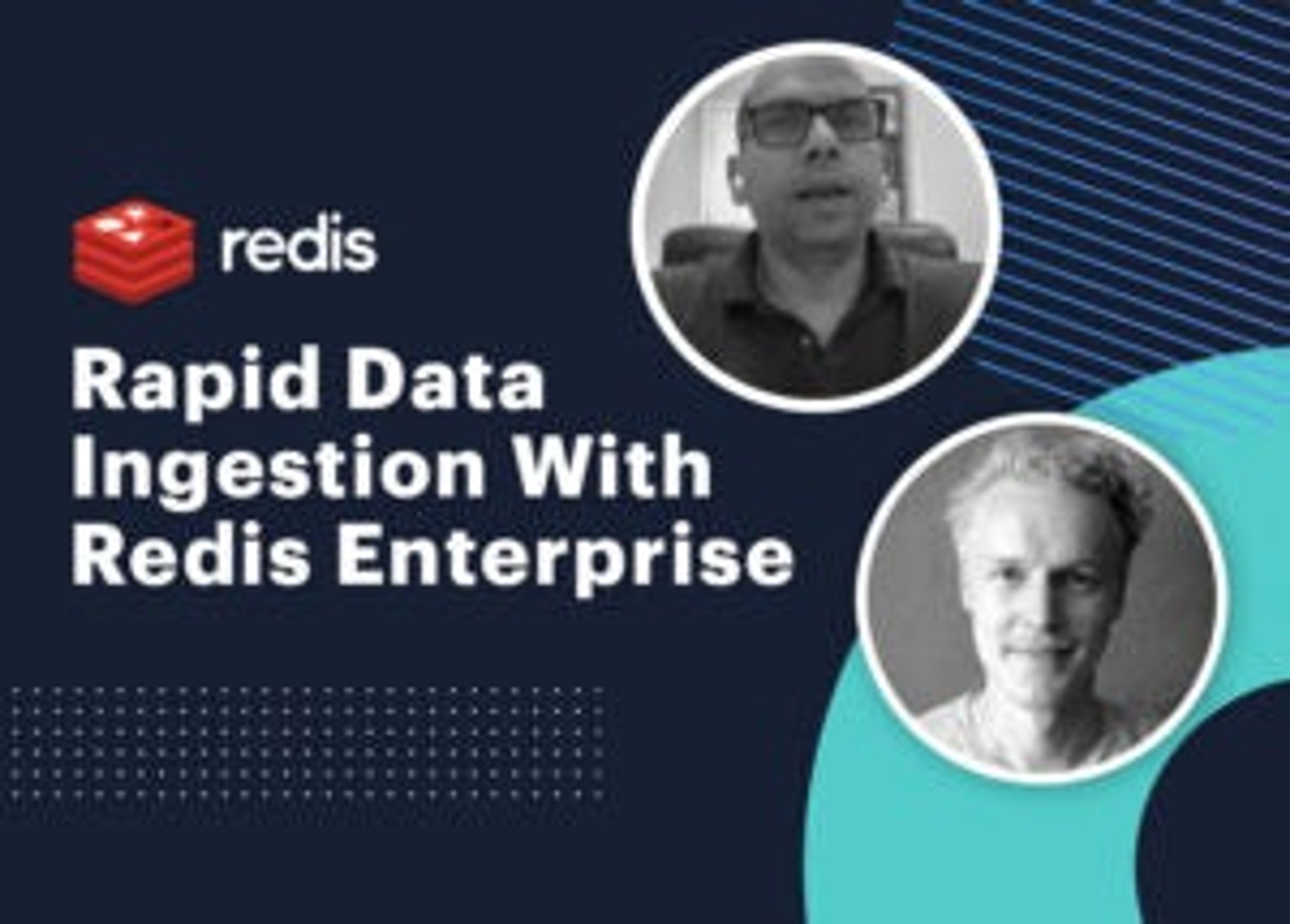Blog
Why You Should Consider Migrating from GemFire to Redis
Introduction – from In-Memory Distributed Grid to Redis’ real-time data platform
Note: This blog post was edited November 5, 2024 to reflect the latest changes to Redis products..
If your business is using an In-Memory Data Grid system such as GemFire, it’s likely past time to upgrade to more advanced technology such as Redis. Here’s why we think so.
An In-Memory Data Grid (IMDG) is a distributed computing technology that stores and manages large volumes of data in the main memory of interconnected computers. IMDGs gained popularity in the mid-2000s and were once a go-to solution for high-performance, low-latency data access. However, as technology landscapes have evolved, the prevalence of IMDGs has dwindled, overshadowed by the maturation of cloud-native, microservice, and serverless data architectures. In this transformative era, the spotlight has shifted to more adaptable and cost-effective alternatives, with Redis emerging as the most popular and proven choice for high-performance, low-latency data access.
Redis stands as a robust replacement for IMDGs due to its simplicity, versatility, and unparalleled performance. The inherent flexibility of Redis facilitates integration into architectures such as cloud-native and microservices environments. By migrating from an IMDG to Redis, you’re not just adapting; you’re ensuring a more agile, efficient, and cost-effective real-time data strategy for the future.
Once you’ve chosen Redis as the replacement for your IMDG, you’ll need to consider how to make the transition. In the rest of this article, we’ll explore the essentials of migrating from one such popular IMDG, GemFire, to Redis, by helping you understand the terminology differences and the best practices for migration. This will help you avoid common issues and lead to a smooth and effective transition.

Migrating from GemFire to Redis in Practice
Migrating complex systems interacting with GemFire can be daunting. Our expertise and specialized tools help facilitate these migrations efficiently and effectively.
Consider a scenario where you may have multiple services writing to GemFire, with dozens more reading from those same GemFire instances. In these cases, we suggest using a continuous replication process that migrates data from GemFire to Redis in real time. Once this replication process is established, you can then transition workloads to Redis one by one, over time. You may consider blue-green deployments to confirm the correct behavior prior to going live.
Redis Connect is a data replication and change data capture (CDC) framework that we’ve built to simplify these migrations. With Redis Connect, you can run both one-time migrations as well as continuous replication. This ensures that your Redis databases always reflect the latest writes to your GemFire deployments.
On a more technical level, Redis Connect runs as two or more JVMs (deployed on the OS and infrastructure of your choice as needed to meet your throughput and high availability requirements). These JVMs replicate all writes from GemFire to Redis. Redis Connect also includes tools for monitoring and alerting on this real-time data flow, so you can observe your migration process. The high availability built into Redis Connect also means you can safely run this migration process for the extended period of time it may take to fully migrate your applications from GemFire.
If you want to dig into the details, review the configuration for our Redis Connect GemFire example or check out our previous webinar available for on-demand replay for a simple scenario we provide for reference.
Migration Success Stories
Several large financial institution Redis customers have chosen to migrate from GemFire to Redis using Redis Connect. In all cases, they’ve selected Redis for its performance, ease of use, and optimized total cost of ownership.
For example, a leading U.S. bank, grappling with Gemfire’s complex operations and frequent outages during upgrades, modernized its infrastructure by migrating to Redis. The move streamlined management, reduced the need for specialized expertise, and minimized operational risks. The migration returned a positive return on investment almost immediately with a roughly 33% reduction in licensing and infrastructure costs. That wasn’t all, though. Indirect savings due to the elimination of downtime and the lowered risk of fines by regulators pushed the ROI even higher. Finally, the bank was assured of a smooth process for migrating on-premises workloads to Azure Cache for Redis Enterprise in the future.
In another case, a prominent asset management company, confronted with scalability issues, stability concerns, and escalating GemFire costs, chose Redis. This strategic shift to a self-serve, shared caching solution across both production and development environments led to a simplified, more efficient architecture. It replaced GemFire across all front-end caching applications with minimal application code changes, leading to significantly lower total cost of ownership. Additionally, this migration was a strategic step toward modernization and efficiency in its data management practices as it looked to a cloud migration in the future.
Considerations for a GemFire to Redis migration
As you consider migrating from GemFire to Redis, there are several key factors that should be taken into account. You should also be aware of the pros and cons when considering either an offline or online live cutover:
- The design of the future architecture
- The server-side architecture requirements and sizing
- The impact on the application and underlying code
- Your timeline and the corresponding effort, risk and benefits
One of the first decisions you need to make is how you’ll deploy Redis. As you may know, Redis is available as open source software as well as commercially, with Redis Software and Redis Cloud. Migrations from GemFire to Redis Community Edition are more complex, partly because of the expertise required to provision and maintain an open source Redis cluster, including the challenges with governing and securing an open source Redis deployment.
Redis Software is built upon Redis Community Edition but provides an improved architecture, better security and management capabilities, and a richer developer feature set, with querying, indexing, vector search, and more, built into the core. Our commercial Redis offering also provides more operational reliability during complex data operations such as live migrations. Conveniently, Redis Software can be deployed on-premises, in cloud self-managed deployments, and also as a fully managed, cloud-first database as a service as Redis Cloud.
Redis is the de facto key/value store for major cloud service providers, including Amazon Web Services, Microsoft Azure, and Google Cloud Platform. Each of these major cloud providers offers Redis Cloud or Azure Cache for Redis Enterprise, powered by Redis, with a service-level agreement backed by financial penalties.

What to know for your migration: Mapping GemFire concepts to Redis
With technology change, the language changes as well. The differences in terminology and concepts can be intimidating, and established expertise may seem hard to rebuild at first. To facilitate this transition for GemFire practitioners as they begin their migration to Redis, let’s explore how some of GemFire’s concepts map to Redis.
We will cover two dimensions:
- Cluster topology and architecture
- Client libraries, data model, and data processing
Cluster topology and architecture
| Runtime | |
| Runtime | GemFire is primarily written in Java and requires a JVM. This comes with long tuning cycles and hard-to-predict side effects due to Garbage Collection, even though modern JVMs are improved. |
Redis is primarily written in C and unlike GemFire, the Redis shard processes do not require the additional complexity of deploying JVMs. | |
| Cluster topology, discovery and quorum | |
| Cluster topology, discovery and quorum | With GemFire, you need “Locator” nodes on additional JVMs to build a quorum system separate from both the client nodes and the data nodes. |
With Redis, the design separates the cluster control plane from the data plane by using a symmetric shared nothing architecture – all nodes are the same – which also fits better with container and cloud based deployments. | |
| Persistence | |
| Persistence | GemFire has some persistence capabilities configured on a per-region basis. |
Redis provides compact snapshots for backup and restore (RDB) as well as configurable append-only-file (AOF) disk formats at database level. The AOF format can be configured with every-second but also with every-write fsync, giving control for how to design the system with durability per database and use case. | |
| Sizing | |
| Sizing | GemFire sizing often takes creative wizardry, with JVM, headroom for GC, headroom for the app, headroom for metadata and serialization, indexing, and so on. In addition to CPU sizing and headroom for garbage collection, each deployment is specific, driving costs up due to complexity and cycles to stabilize. |
Redis is built on a sharding model with one core per shard for improved speed and reduced latency, and one shard handling up to 25GB and/or 25K ops/s for best system stability. This simplifies the scale-up and scale-out model because you can pack multiple shards per node to optimize multi core hardware or VMs. | |
| Multi-tenancy and re-sizing | |
| Multi-tenancy and re-sizing | GemFire allows a single member to host multiple regions, but they are only logically segregated. |
Redis Software and Redis Cloud are multi-tenant with authentication, role-based access control (RBAC) and TLS mutual authentication per database, enabling higher density of databases and shards. This lets small Redis caches and larger persistent Redis databases be deployed and operated on a shared infrastructure and control plane, reducing the cost of infrastructure and operations while adhering to a “one database per service” design principle. | |
| Auto tiering | |
| Auto tiering | GemFire has an optional off-heap configuration to store part of the data in RAM but outside of the memory allocated to the JVM. This makes tuning and observability more complex due to unpredictable JVM Garbage Collection processes at runtime. This does not reduce system TCO for large workloads. |
Redis has native auto tiering and a configurable RAM:SSD ratio (also known as Flash) to improve TCO when not all of the data must reside in DRAM. We have been doing benchmarks with SSDs / NVMe for improved performance, and this is also generally available in Redis Cloud, which are the most performant AWS i4i SSD instances. The Auto Tiering architecture is also designed for high concurrency, and will keep keys, indexes, and the most frequently used values in RAM for optimum performance. | |
| Active-active geo-replication | |
| Active-active geo-replication | GemFire has geo cluster replication support through the WAN gateway architecture (which requires additional nodes). The system operates in a basic “last write wins” policy and provides an API to implement your own conflict resolution. |
Redis Software and Redis Cloud have an active-active cluster replication mechanism that works uni-directional, bi-directional, and for more than two clusters across data centers and/or availability zones. Active-active is available in self-managed, cloud, and Kubernetes-based deployments. | |
| Application programming interface and command line interface for operations | |
| Application programming interface and command line interface for operations | GemFire provides a CLI tool called “gfsh” to help with scripting, and some API over REST endpoints but lacks proper ecosystem integration for operations, cache as a service, or cluster as a service. |
Redis provides a CLI and REST API for cluster and database control, both self-managed and in the cloud. We also provide integrations with infrastructure-as-code platforms such as Terraform, Ansible, and Pulumi. | |
| User interface for operations | |
| User interface for operations | GemFire provides a read-mostly web UI (“Pulse”) and some statistics, metrics collection, and a visualization tool (“Visual Statistic Display”) for ad-hoc troubleshooting. It also provides a Prometheus endpoint. |
Redis Software and Redis Cloud provide a web UI with several operations available at the admin level to dictate changes, matching the UI to what can be done with the API (e.g., create a database, resize, etc.). It also has a built-in tool to generate a dump with metrics and cluster state that simplifies time to root cause analysis when interacting with Redis support. | |
| Kubernetes-based deployment | |
| Kubernetes-based deployment | Both GemFire and Redis provide a native Kubernetes operator and custom resource definitions for deployment on K8s. |
| Cloud with fully-managed deployment | |
| Cloud with fully-managed deployment | Redis is available as a managed cloud-first deployment on Azure, AWS and Google Cloud. The service is available as a fixed service (Redis Essentials) or as a flexible, enterprise-grade cloud deployment (Redis Pro) with dedicated clusters, private and high speed network connectivity, integrated billing with cloud marketplace, and on-demand provisioning on your cloud regions of choice. Redis Cloud comes with Enterprise support and an SLA and includes auto tiering and active-active capabilities. |
GemFire provides a mature, low latency, in-memory data grid. GemFire has mature management tools and can handle high scalability with proper planning. GemFire is well suited for on-premises and VMware Tanzu environments.
Redis provides a mature, low latency, in-memory data platform, with robust management and development tools that scale easily. The company continues to invest in making Redis easy to deploy and manage in the most efficient way possible. In addition to suitability in any Kubernetes or on-premises environment, Redis is also available as a managed service on AWS, Microsoft Azure, and Google Cloud.
Migrating from GemFire to Redis provides the low latency and high throughput performance your applications require while also providing a more flexible and efficient technology for the future.
What to know for your migration: Client libraries, data model, and data processing
| Client application | |
| Client application | GemFire has a narrow set of supported language and libraries, and an opaque protocol involving back and forth serialization adding to inefficient CPU and memory consumption. |
Redis provides a broad ecosystem of clients and support for the main client libraries. | |
| Java, C++, .Net, Node.js with JSON | |
| Java, C++, .Net, Node.js with JSON | With GemFire, the data modeling is primarily around “objects”.Only Java, C++, .NET, and Node.js are documented. |
With Redis, data modeling includes “objects” (called hashes) but also provides advanced data structures such as “sorted sets” and native JSON. | |
| Spring Boot | |
| Spring Boot | With GemFire, some specific wrappers for Apache Geode exist. |
With Redis, both Jedis and Lettuce reactive libraries are available to integrate with Spring Boot. | |
| Spring Data | |
| Spring Data | With GemFire, Spring Data and Spring Data Repository are available. |
With Redis, Spring Data and Spring Data Repository are available. | |
| Where the key/value data is stored | |
| Where the key/value data is stored | GemFire uses the concept of “Region” with partitioned, distributed, and/or replicated regions and WAN-replication regions. |
Redis uses the concept of “database” that can be persistent, HA, or multi-site active-active. This provides a simpler paradigm to scale databases independently while achieving higher efficiencies using Redis' multitenant architecture. | |
| Key formats and keyspaces | |
| Key formats and keyspaces | With GemFire, the concept of “Region” enforces a key format with serialization and low level API and configuration for key colocation, making the overall system complex to configure, fragile to evolve, and rigid for developers. |
Redis provides keyspace for data structure segmentation using standardized syntax prefixing such as: “user:123” and “transaction:abc”. | |
| Indexing, Queries and Search | |
| Indexing, Queries and Search | GemFire has an “Object Query Language” and indexing, and adds a custom and modified Lucene for full text (inheriting additional complexity) to provide search functionality. Lucene is not known to be fast or performant. Initially, the solution was developed as a plugin vs. a native feature. |
Redis provides native distributed indexing and queries, including aggregation. Indexing includes numeric, tag, text and full text search, using the Redis Query Engine and JSON. | |
| Vectors for AI applications | |
| Vectors for AI applications | GemFire could rely on Lucene for vector and search, but at the time we wrote this blog post, we could not find any details or code sample for vector, vector indexes, and vector search in Apache Geode or GemFire documentation. It is likely your existing GemFire implementation is not using GemFire for vectors. |
Redis has native support for storing vectors and searching for vector similarities with vector indexes. It also integrates with popular AI and LLM frameworks such as LangChain. Using Redis for vectors and as a vector database makes AI and ML applications easier to write and operate, whether it is feature store, online feature serving part of your MLops stack, or for powering ChatGPT-like LLM-based applications. This enables real-time, scalability and simplicity for AI-based chatbots, recommendation engines, and fraud detection engines. | |
| Event streams and server side data processing | |
| Event streams and server side data processing | GemFire has events, continuous querying, and function execution, which requires coding and for Java to be deployed on the server. |
Redis provides notification, pub/sub, and streams native support at its core for using Redis as a messaging event-driven platform. Redis also offers Triggers and functions for server-side processing where user-defined functions are executed on-demand, upon messages in streams, data change, or time. | |
| Transactions | |
| Transactions | Note: Neither GemFire nor Redis are designed to act as single-server transaction ACID databases, because as distributed systems, the CAP theorem applies. |
GemFire has transaction support with configurations for ACID and two-phase commit (XA transactions), but requires upfront design to avoid corner cases inherent to a distributed system such as conflicting writes, distributed locks, or failure conditions. Due to these complexities, this configuration is rarely used or used only in specific subsets of the workload for which GemFire is often not a natural fit. | |
Redis provides clear semantics for transaction, durability and distributed communication:For example, MULTI enables a pipeline which groups commands in one round trip to the server.The WATCH command ensures optimistic locking and dirty writes, especially when combined with pipeline.WAIT, WAITAOF, and configuration for AOF on every write (fsync) can ensure full durability to disk with strong consistency, with AOF configured on master shard or replica shard. The application controls error and retry and scopes those specific calls to code paths where such consistency is required.This encourages reasoning about transactions at the application level, with semantics provided by the server but enforced by the application logic. |
GemFire is purpose-fit for on-premises, Java, and VMware Tanzu environments. It has a diverse and powerful set of capabilities and tools to support that function.
Redis is used in a wide variety of environments for a wide variety of solutions. Redis has robust management and development tools, and a wide and diverse community of practitioners and contributors. Redis is also renowned for its combination of simplicity (aligned to the Redis open source manifesto) with comprehensive features for a real-time data platform.
Migrating from GemFire to Redis allows you to use many of the same skills and tools you are accustomed to with a simpler architecture, enhanced flexibility, and a more diverse ecosystem.
Still on the Fence about Migrating?
Migrating from GemFire to Redis modernizes your infrastructure, liberating your organization from legacy constraints and unlocking the potential of real-time data processing and management. Backed by our tooling and expertise, customers have migrated complex workflows to Redis providing the following benefits:
- Operational Simplicity: Redis is easy to manage and operate.
- Comprehensive Features: Redis has an extensive and up-to-date feature set, fulfilling a wider variety of requirements across various applications, including session stores, microservices, caching, and real-time workloads.
- State of the Art Functionalities: Redis provides advanced capabilities such as JSON with full text search and full vector database capabilities for Generative AI.
- Cloud Compatibility: Redis Cloud offers a fully managed, serverless architecture that streamlines operations and reduces operational costs.
These factors collectively position Redis as not just a technological upgrade, but a strategic enhancement, resulting in operational simplicity and cost savings.
Related resources

Our Redis Connect GemFire Example
Learn More

Rapid Data Ingestion with Redis Enterprise
Learn More

Legacy Database Migration: What To Know Before You Start
Learn More
Get started with Redis today
Speak to a Redis expert and learn more about enterprise-grade Redis today.

